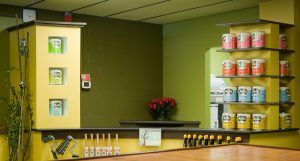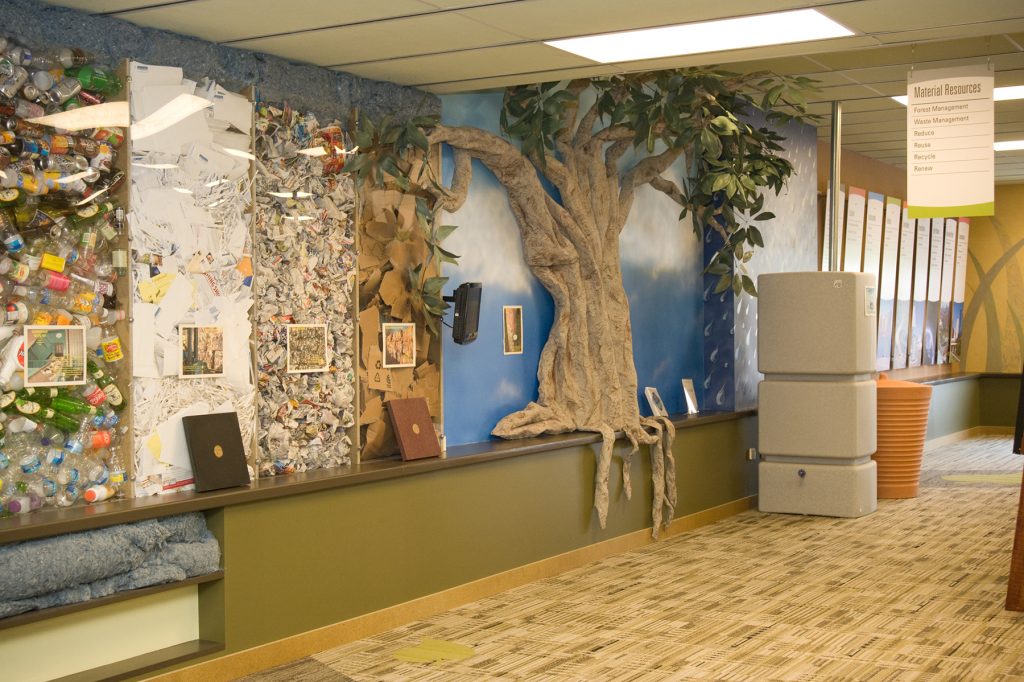Using green, sustainable, Fair Trade (GSFT) products and materials are increasing in popularity and use across all industries, and interior design is no exception. By using environmentally sustainable products we can do our part to reduce energy consumption, use of natural resources, and lessen toxins for our clients and others that use the spaces we design.
More and more manufacturers are increasing their sustainable and green materials for fabrics, window treatments, surfaces, flooring, walls and ceilings. One of the items you may be most familiar with is paint with a low- or no-VOC (volatile organic compounds) label. Using paint and finishes without VOCs reduces the chemicals that are released after it dries. Colored clay, an ancient technique reintroduced when Pompei was excavated, is once again being used on walls. Recycled tile, earth-based plasters, and renewably sourced wallpapers with environmentally friendly glues are also great choices for walls and ceilings.

Low and no-VOC paints are now widely accessible.
Material innovations continue to amaze and inspire us. Plants and algae are being considered as living elements in proposed building designs, so much more than green walls and gardens. Ideas for using normally wasted items are many: peanut shells create low-cost boards, potato peels and used blue jeans become insulating material, banana leaves and orange peels are turned into fabrics, and mushrooms are being grown into bricks and packaging. By-products such as coconut husks are finding new lives as furniture and tile.

Plastics, paper and coconut husks are all used to create various interior materials.
Many sustainable materials have existed for a long time and are gaining popularity. Organic cotton, linen, bamboo, hemp, soy fiber, bark cloth, wool, cashmere, alpaca, leather and silk make sustainable, beautiful fabrics, window treatments, and carpets. Synthetics made from recycled materials such as plastic bottles, industrial waste, and other recycled content are widely available. Tile is being made from recycled materials, wood, natural stone, even aluminum cans and skateboards. Fast growing materials such as cork and bamboo, and recycled rubber are frequently used as flooring and in other surfaces.
If having less toxins and using environmentally sustainable items is important to you, your options are almost endless! We look forward to seeing what other new, creative innovations await!







